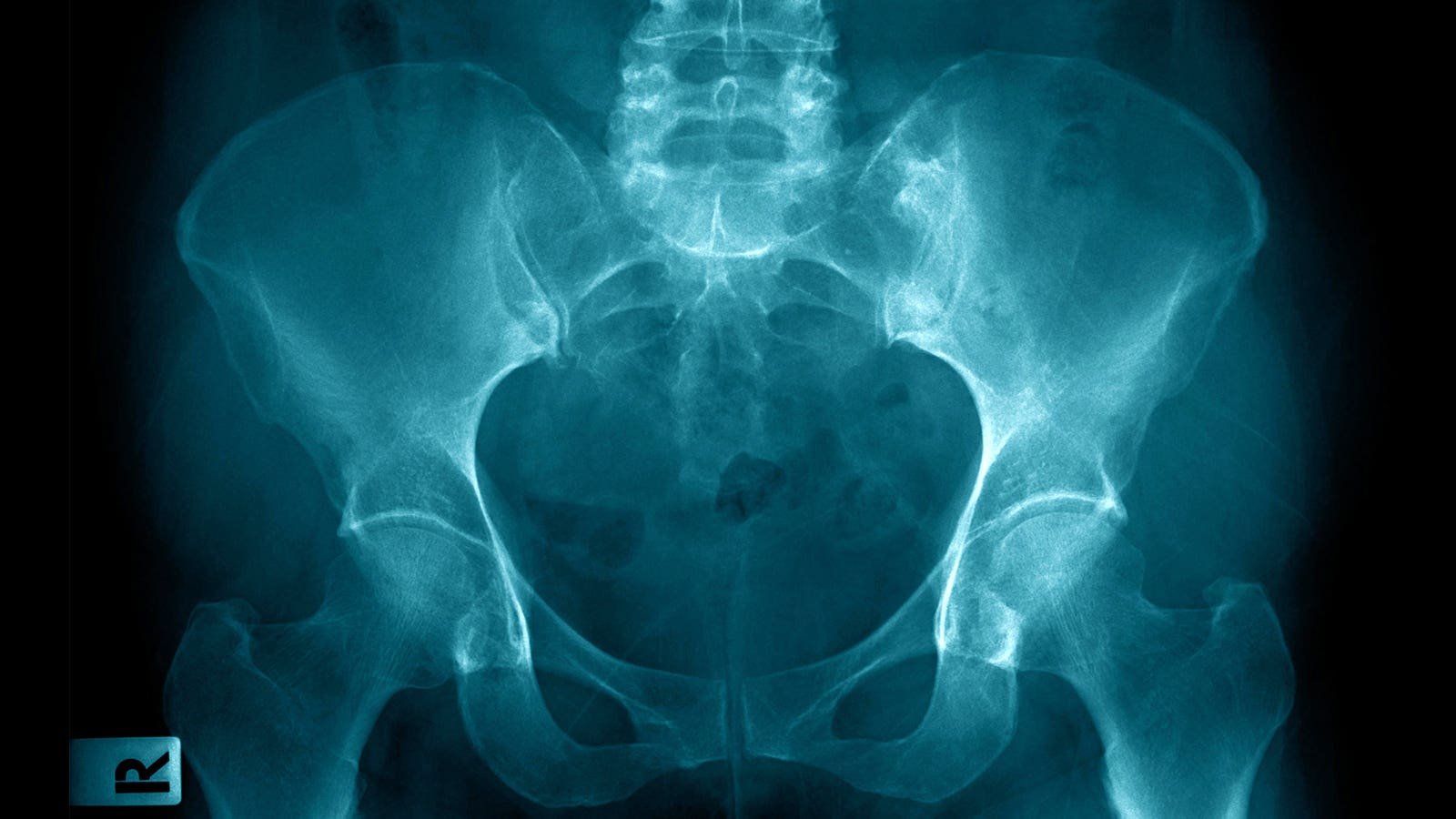—
Hypothesized, however proof not as clear till now
by
John Gever, Contributing Author, MedPage At present
December 16, 2024
Sufferers with axial spondyloarthritis (axSpA) handled with tumor necrosis issue (TNF) inhibitors have been at considerably decrease danger for hip and backbone fractures in contrast with these receiving solely nonsteroidal anti-inflammatory medicine (NSAIDs), a big claims-based examine indicated.
In information from the Merative MarketScan Database, which covers almost everybody within the U.S. with employer-paid insurance coverage, axSpA sufferers had almost 30% decrease odds for hip and backbone fracture in the event that they have been on anti-TNF medicine after adjusting for age, intercourse, and 12 months of analysis (OR 0.71, 95% CI 0.59-0.85), in keeping with Maureen Dubreuil, MD, MSc, of Boston College, and colleagues.
Adjustment for extra parameters similar to corticosteroid use and comorbid osteoporosis attenuated the chance lower solely barely (OR 0.75, 95% CI 0.62-0.91), the researchers reported in Arthritis & Rheumatology.
Typical disease-modifying antirheumatic medicine (DMARDs), however, had no obvious impact on fracture danger both within the minimally adjusted evaluation (OR 0.96, 95% CI 0.76-1.23) or with all of the measured potential confounders included (OR 0.93, 95% CI 0.72-1.19).
“Fracture is an consequence of concern in axSpA given its affiliation with morbidity and mortality,” Dubreuil and colleagues defined, with epidemiological information confirming that bone breaks are more common in these patients in contrast with the inhabitants at massive. “Native bone reworking” in SpA is believed to boost danger for vertebral fractures, they added, whereas systemic irritation seemingly drives weakening in different bones.
Present tips suggest NSAIDs as first-line therapy for axSpA, to be adopted by TNF inhibitors if illness exercise stays unacceptably excessive. Typical DMARDs and steroids are discouraged except there may be non-axial involvement. (Superior therapies with non-TNF targets could also be used as third-line remedy; these weren’t addressed within the present examine.)
But whereas anti-TNF medicine are well-known to enhance the main indicators and signs of axSpA, their results on fracture danger stay unstudied, other than a couple of small analyses of bone density.
To deal with this hole, Dubreuil and colleagues recognized 13,519 sufferers with axSpA from 2006 (when TNF inhibitors started for use within the illness) to 2021 within the MarketScan database, amongst whom 1,229 circumstances of backbone or hip fracture have been recorded. For every of those circumstances, as much as 10 axSpA sufferers with out fractures have been then chosen as controls — not matched by demographics or different parameters, as Dubreuil’s group believed that may introduce confounding. The “index date” for fracture circumstances was the date of fracture; for the corresponding controls, it was a random date from the identical 12 months. All sufferers within the examine needed to have not less than 1 12 months of steady insurance coverage previous to the index date.
Since sufferers and controls weren’t matched, the 2 teams differed significantly. Imply age for fracture circumstances was about 53 versus 47 for controls; some 38% of fracture circumstances have been girls versus 45% of controls. Not surprisingly, osteoporosis was extra frequent in fracture circumstances, as have been different elements related to fracture danger similar to tobacco and steroid use.
No less than numerically, sufferers who had suffered earlier fractures noticed higher reductions in danger for brand spanking new ones when taking TNF inhibitors, in contrast with these with out such historical past (OR 0.59, 95% CI 0.23-1.51, vs OR 0.83, 95% CI 0.67-1.03, with NSAID customers because the comparators).
A shocking variety of sufferers amongst each fracture circumstances and controls — almost half — weren’t utilizing any of the three medicine courses examined within the examine. Males within the “no medicine” group really confirmed numerically higher fracture danger than NSAID customers (OR 1.15, 95% CI 0.93-1.42, within the absolutely adjusted mannequin); girls, nonetheless, had just about the identical danger with “no medicine” versus NSAIDs (OR 1.01).
“Our examine demonstrates a protecting impact of TNF [inhibitors] on fracture danger in axSpA in contrast with use of NSAIDs or [conventional] DMARDs,” Dubreuil and colleagues wrote. “Future analysis investigating the impression of the timing of TNF [inhibitor] initiation and different axSpA therapy modalities, similar to [interleukin-17 and JAK inhibitors], on fracture danger in axSpA will additional improve our understanding of how fracture danger could also be mitigated on this inhabitants.”
Limitations to the examine included its reliance on administrative information, in addition to a lack of knowledge on relative illness exercise, medicine doses or subtypes, and sufferers’ physique mass index values. Additionally, Dubreuil’s group famous that sufferers not utilizing TNF inhibitors may have had contraindications for them which may additionally elevate fracture danger. Lastly, the comparatively small variety of fracture circumstances within the general whole of axSpA sufferers restricted the analyses that could possibly be carried out with significant outcomes.
-
![author['full_name']](https://clf1.medpagetoday.com/media/images/author/johnGever_188.jpg)
John Gever was Managing Editor from 2014 to 2021; he’s now a daily contributor.
Disclosures
The examine was funded by the NIH with further assist from the Rheumatology Analysis Basis, the Spondyloarthritis Analysis and Remedy Community, and the Spondylitis Affiliation of America.
Dubreuil reported receiving a analysis grant from Pfizer; different authors declared they’d no related relationships with industrial entities.
Main Supply
Arthritis & Rheumatology
Source Reference: Driscoll D, et al “Affiliation of therapies for axial spondyloarthritis on the chance of hip and backbone fractures” Arthritis Rheumatol 2024; DOI: 10.1002/artwork.43082.























































